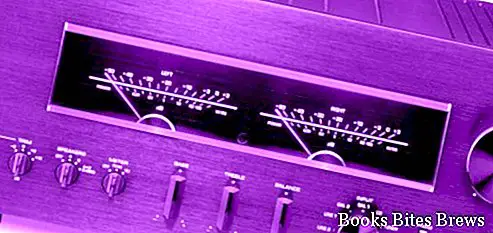Guide to choosing a good hi-fi stereo amplifier, capable of faithfully reproducing the details of pure sound and the dynamics of music.
Choice of stereo amplifier
An amplifier is a component that acts as an electrical and mechanical adapter between the various signal sources that can be connected to it and the loudspeakers.
The purpose of an amplifier is precisely to amplify, that is to say increase, the power of the signal supplied by the connected sources which alone would not have the power necessary to directly drive the speakers of the speakers.
An amplifier increases the voltage amplitude of the signal and at the same time is able to provide an adequate supply of current.
Together with other important features, the first factor highlighted in the technical characteristics of an amplifier is that relating to the power expressed in watts rms and the capacity about the actual current supply on the connected passive load, consisting of the speakers.
The power will be chosen based on the room to be sounded and the efficiency of the speakers.
The optimal power is obtained by calculating the volume of the room, considering 1 watts for each channel per cubic meter, taking into account a typical sensitivity of the speakers equal to 90 decibels.
As an example, it can be said that for an environment of 90 cubic meters, an amplification of 90 watts is recommended for each channel.
The sensitivity of the speakers means the volume reproduced one meter away from the center of the speaker, applying a power watts.
The stages of amplification
We can divide an amplifier into two connected parts, the preamplifier stage and the power final stage.
The preamplifier accepts the input signal and provides it with a first slight initial gain, preparing the signal for the next stage.
Recommended readings- Telephone inventor: how the telephone network works
- Magnetodynamic speaker: component of the loudspeakers
- DVD player: what it is and how to mount it on your PC
- Stereo amplifier: which to choose
- Cellular evolution: communicating with mobile telephony
The power amplifier, or final amplifier, instead serves to provide the signal with a much wider gain with a greater current supply capable of going to feed the speaker which will transform this signal into audible sound.
Integrated stereo amplifier
The amplification stages are located in a single chassis.
Pre and final
The amplification stages are separate, each has an independent frame.
Power
The power of an amplifier is expressed in watts rms.
Through the final transistors, the level of the sound signal starting from a current with a low value is increased a lot.
The increased current circulates inside the coil of a magnet speaker which begins to vibrate its membrane, transforming any current variation into sound.
A higher current value will correspond to a higher sound pressure.
The measurement of the maximum power of an amplifier is performed on a load consisting of a pure resistor, applying a sinusoidal signal to the input and increasing the voltage until the maximum possible signal is reached at the output.
The output signal
This output signal from the amplifier's final stages is transferred to the speakers and will be adapted according to the impedance of the speakers to avoid distortion.
The impedance of the speakers varies from 4 to 16 ohms and constitutes the value of the resistance.
The lower values correspond to speakers that are more difficult to pilot.
In fact, each amplifier works better within a certain impedance range and for this reason the choice of the amplifier must be made by also evaluating this important aspect, which allows better interfacing with the speakers to be connected.
Signal to noise ratio
This value expresses the degree of silence of the device, i.e. noises extraneous to the signal reduced to the minimum possible, and regards the various inputs available on an amplifier.
It is important to verify that the signal to noise ratio is equal to or greater than that of the source to be connected.




